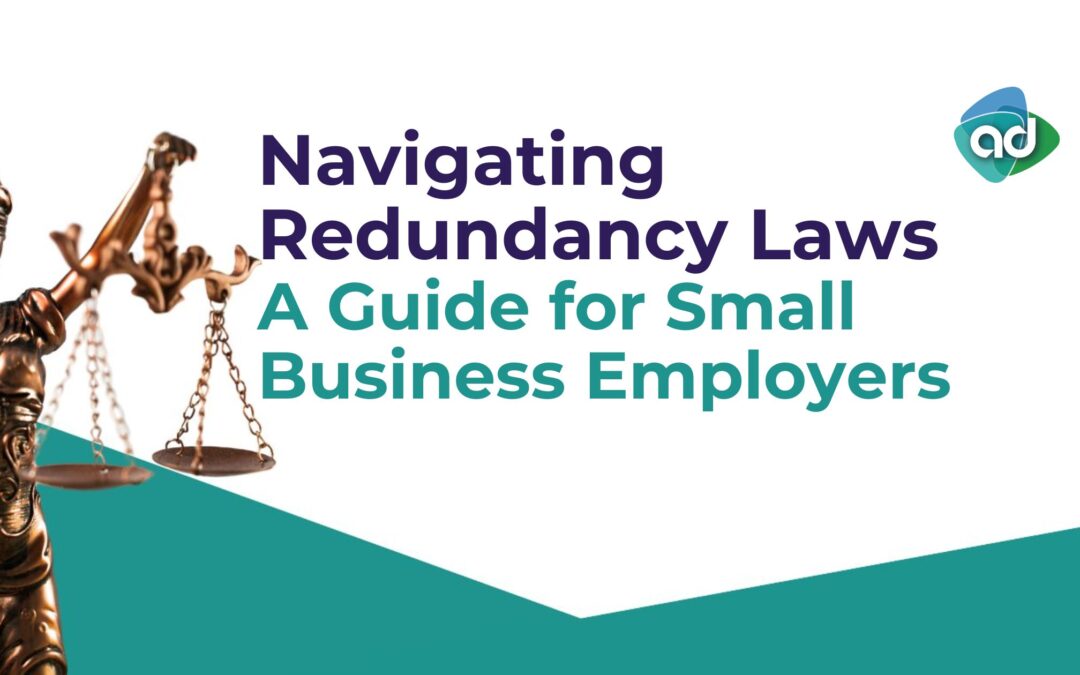Redundancies can be one of the most difficult aspects of running a small business, both emotionally and legally. As a business owner, ensuring that any redundancy process is handled properly is crucial—not just for avoiding legal issues, but also for treating employees fairly and maintaining your company’s reputation.
This guide will provide an overview of the key legal and ethical considerations you need to be aware of when managing redundancies.
What is Redundancy?
Redundancy occurs when a business needs to reduce its workforce due to financial pressures, operational changes, or the closure of a business or location. It’s important to remember that redundancy is not related to an employee’s performance, but to the needs of the business.
However, even when redundancies are necessary, they must be handled in line with UK employment law to avoid potential claims for unfair dismissal or discrimination.
Understanding Redundancy Laws
In the UK, redundancy is covered by employment law to protect both the employer and the employee.
Below are some key areas you’ll need to focus on:
1. Genuine Redundancy Situation
To make employees redundant, there must be a genuine redundancy situation.
This can include:
- The business closing down entirely.
- The business ceasing operations at a specific location.
- A reduction in the number of employees needed to do a particular kind of work.
If there’s no real redundancy situation, you may face legal challenges for unfair dismissal.
2. Fair Selection Process
When deciding which employees to make redundant, it’s essential to follow a fair and transparent selection process.
Criteria should be objective, such as:
- Length of service.
- Skills, qualifications, and work experience.
- Disciplinary records and attendance.
Be cautious of discrimination claims by ensuring that no one is selected based on protected characteristics such as age, gender, race, or disability. Redundancy should never be used as a disguise for getting rid of an underperforming employee—that’s what performance management is for.
3. Consultation
It’s legally required to consult with employees if you’re making redundancies. Even if you’re a small business making fewer than 20 redundancies, you must consult with each affected employee. For businesses planning larger-scale redundancies (20 or more employees), collective consultation rules apply.
During consultation, you should:
- Explain why redundancies are necessary.
- Discuss the criteria for selecting employees.
- Explore any alternatives to redundancy, such as reduced hours or redeployment within the company.
This process should be genuine; failure to consult properly can lead to claims for unfair dismissal.
4. Notice Periods and Redundancy Pay
Once a redundancy decision is made, employees must be given the correct notice period and, in many cases, redundancy pay. Employees with at least two years’ continuous service are entitled to statutory redundancy pay, calculated based on their age, length of service, and weekly pay.
You’ll also need to consider contractual notice periods or pay in lieu of notice (PILON) if this is part of their contract. Ensuring that employees receive what they are legally entitled to not only avoids legal challenges but shows that you’re handling the process ethically.
5. Offering Support
Handling redundancies with empathy can go a long way towards maintaining good relationships with both exiting and remaining employees. Offering support, such as career counselling, CV assistance, or even helping employees find other job opportunities, can soften the impact of redundancy. While not legally required, these steps can help protect your company’s reputation and reduce the risk of legal claims.
Tips for Ethical Redundancy Management
Aside from legal compliance, it’s important to manage redundancies with care and empathy.
Here are some key tips:
1. Communicate Openly and Honestly
Transparency throughout the redundancy process is crucial. Keep affected employees informed at every step of the way and be clear about the reasons behind the decision. Honest communication helps prevent misunderstandings and demonstrates respect for your employees.
2. Consider Alternatives to Redundancy
Before proceeding with redundancies, explore alternatives. Could reducing hours or offering voluntary redundancy be a better option? Involving employees in this discussion can sometimes lead to creative solutions that avoid the need for compulsory redundancies.
3. Treat Everyone Fairly
It’s important to ensure that redundancy decisions are made fairly and consistently. Any appearance of favouritism or bias could lead to claims of discrimination or unfair dismissal, damaging both your business and your reputation.
Navigating Redundancies with AD Legal
Managing redundancies can be a complex and emotional process, but you don’t have to do it alone. At AD Legal, we specialise in employment law, offering expert advice to help small businesses navigate redundancies legally and ethically.
Our team can guide you through every step, from ensuring compliance with redundancy regulations to supporting you in consultations and negotiations.
If you’re considering making redundancies, or if you simply want to ensure your processes are legally sound, we’re here to help. Contact AD Legal today for tailored legal advice and support.
Need Help with Redundancy?
We offer expert guidance to ensure you stay compliant while treating your employees fairly. Visit AD Legal to learn more or contact us today for a consultation.
